The Book of Indochinese Memory: Vietnam - Cambodia - Laos by the General Publishing House of Ho Chi Minh City and the EFEO introduces the history of formation and development of the school through historical period of Indochina. These photos includ many rare photos of Vietnam in the early 20th century.
Eight gates of Hanoi's ancient citadel were destroyed by the French at the end of the 19th century, leaving only the East Gate towards the end of Hang Chieu Street, as seen in the photo.
Built in 1749, facing the Red River, Cua Dong, also known as Thanh Ha Mon, was also here, the French had the head of a martial official (Chuong Co) beheaded in 1873, so it called O Quan Chuong. This gate was kept thanks to the intervention of the French Institute of the Far East.
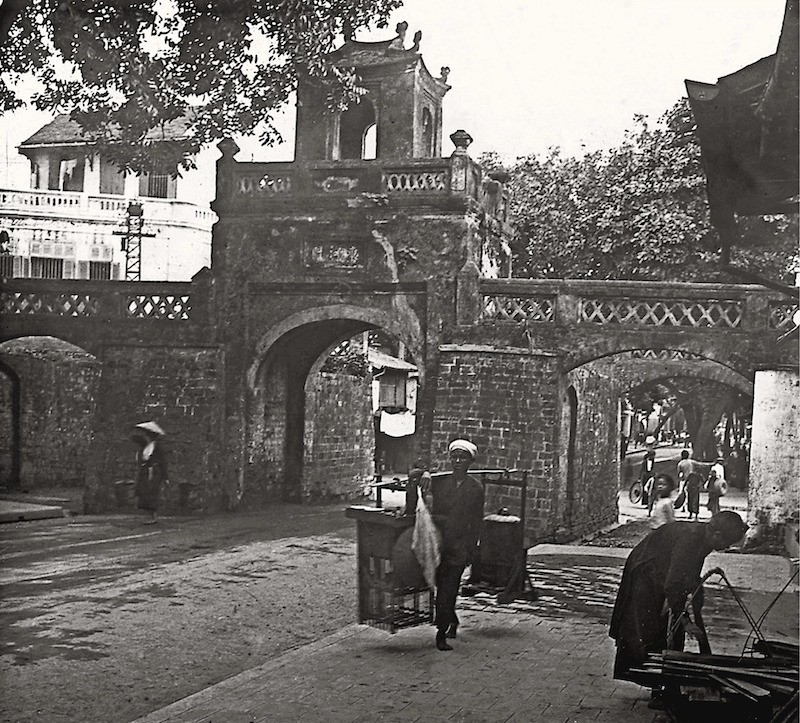 |
| Photo of O Quan Chuong (with no date, L. Finot). Photo: Zing News |
Community ritual in Vietnam is a place to honor important characters who had significant contributions to the community. In the photo is a small pagoda is located in the middle of the lake in the Phu Dong temple grounds. The temple is located in Bac Ninh province, built to commemorate the merits of Phu Dong Thien Vuong. Temple festivals often recreate battle scenes.
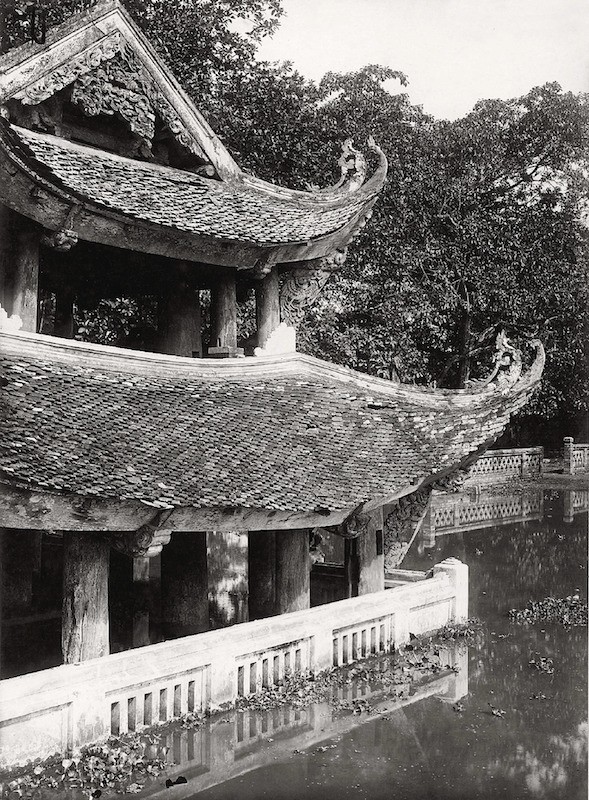 |
| Photo taken in 1929, anonymous. Photo: Zing News |
Bronze statues were also a signature of Vietnamese culture in the 20th century. In the photo, engineers moved the 9-ton Buddha statue at Than Quang Pagoda, Ngu Xa (December 1950). Ngu Xa Village formerly consisted of 5 different communes combined (hence the name Ngu Xa), located on a small floating island in the middle of Truc Bach Lake, Hanoi. Bronze miners were divided into many clans, which were very famous in the 17th century and have created many iconic sites including the bell of the One Pillar Pagoda, the statue of Tran Vu in Quan Thanh Temple.
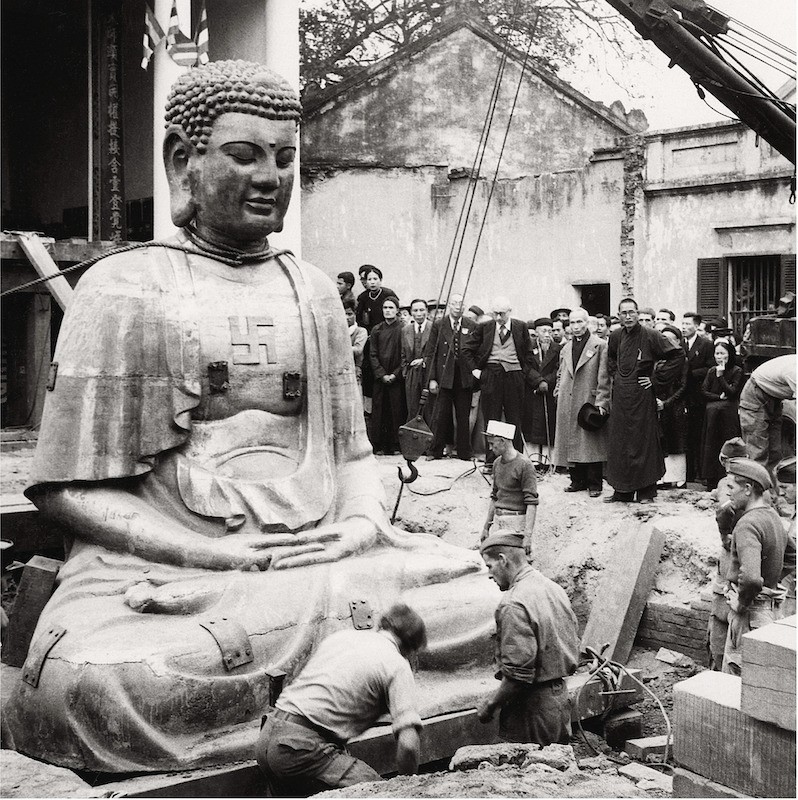 |
| Photo: Zing News |
Phu Khe bridge (An Trach, Ha Nam) is made of wood, includes 19 spans, tiled roof. This type of architecture is called "the upper house, the lower bridge" (upper house, lower house).
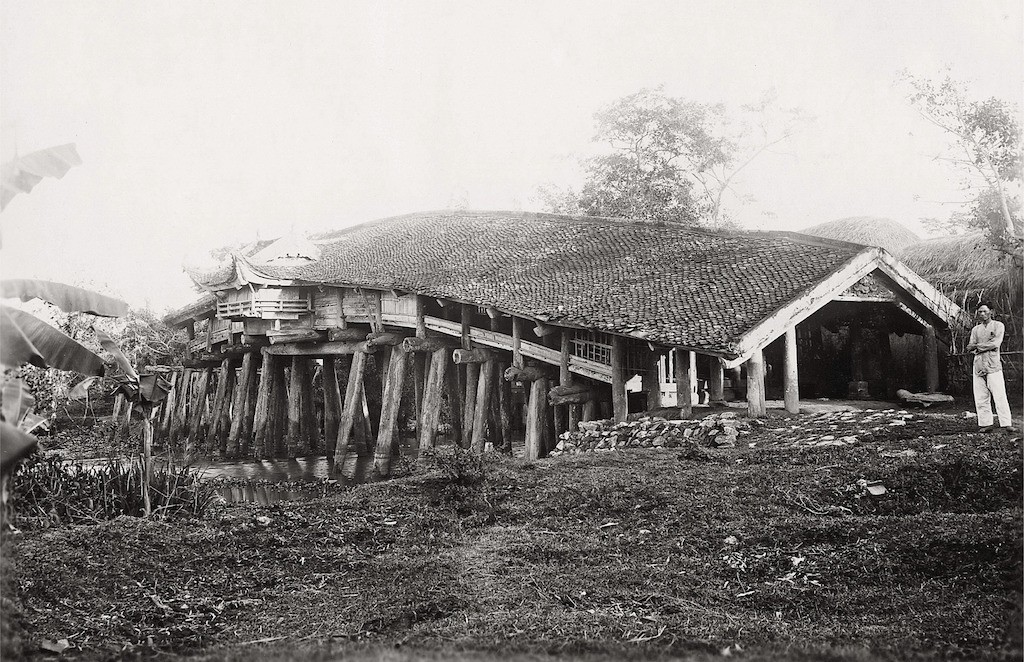 |
| Photo was taken in 1936, anonymous. Photo: Zing News |
The natural wonder of Vietnam, stretching over an area of 1,553 square kilometers, is surrounded by 120 kilometers of coastline, stretching to the Chinese border, including 1,969 large and small islands, limestone ridges and caves.
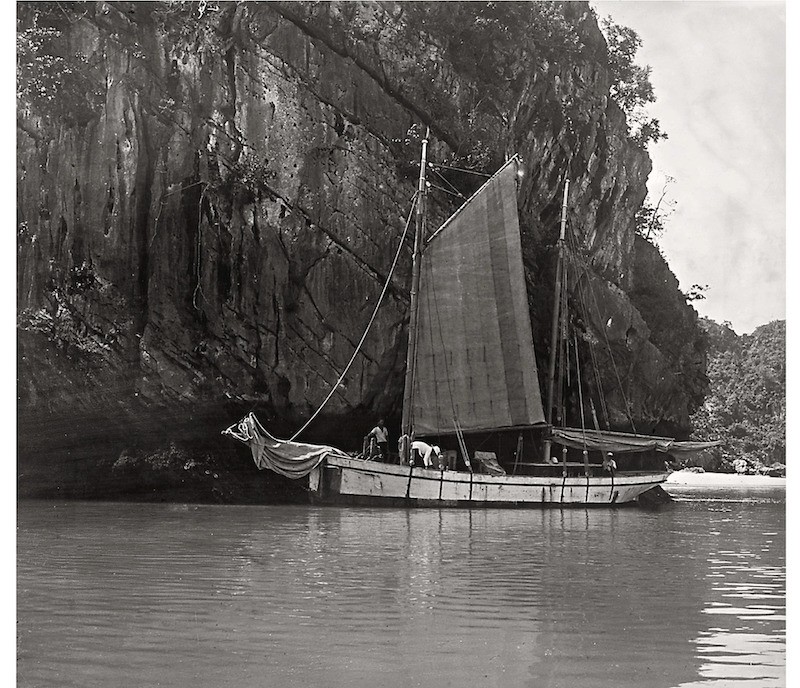 |
| Ha Long Bay (un-dated, L.Finot). Photo: Zing News |
There are also photos of daily life in the Northern of Vietnam, like scenes of people catching fish and crabs for food. In the North, farmers used to plant one crop a year. In the remaining 6 months, the field turns into a fish pond. Then people drain the ponds to catch fish and crabs.
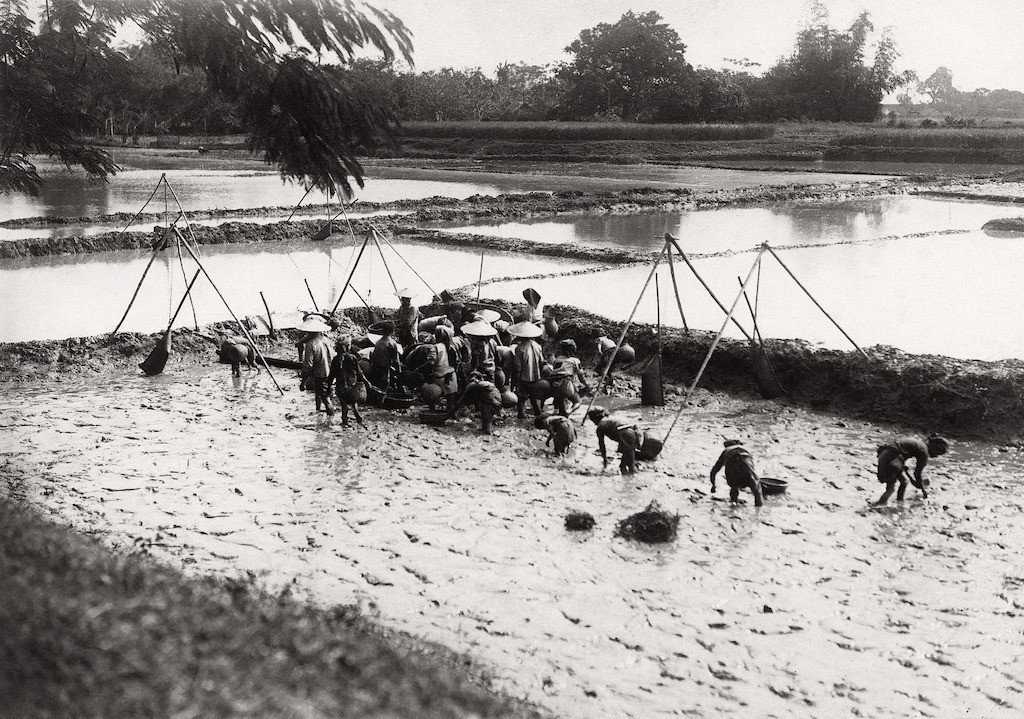 |
| Photo taken in Northern Vietnam, 1926, anonymous. Photo: Zing News |
Buddhists chanting in the temple of Pham Ngu Lao (January 1954, anonymous). This temple also worships Nguyen Minh Khong, a famous ancestor of the Le Dynasty who was said to have cured King Le Than Tong's illness. The temple is located in the center of Hanoi, number 50, Ly Quoc Su, restored in 1951.
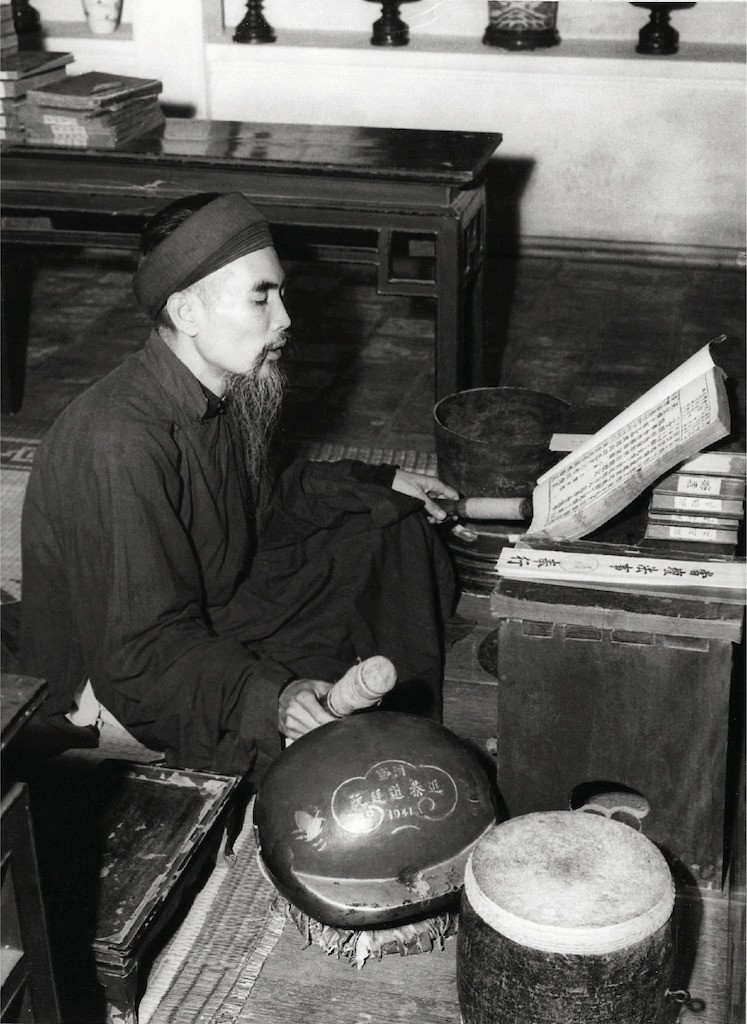 |
| Buddhists chanting in the temple of Pham Ngu Lao (January 1954, anonymous). Photo: Zing News |
Street photos were also a popular section in the photo book.
 |
| Handicraft toys, paper lamps and lanterns during the Mid-Autumn Festival. Photo taken in 1926, L. Finot Photo: Zing News |
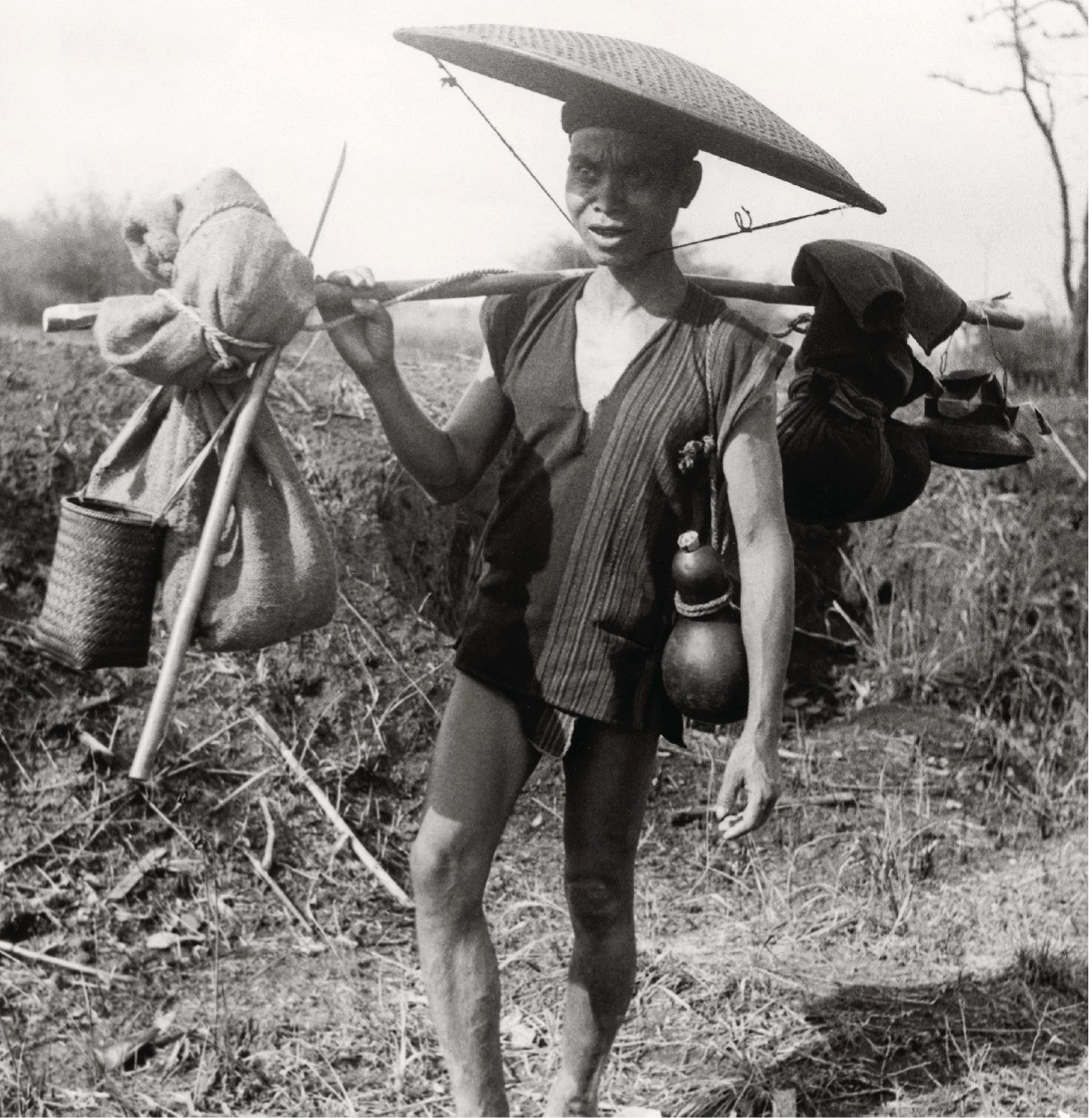 |
| An Ede person near Buon Ma Thuot (date unknown, anonymous). Photo: Zing News |
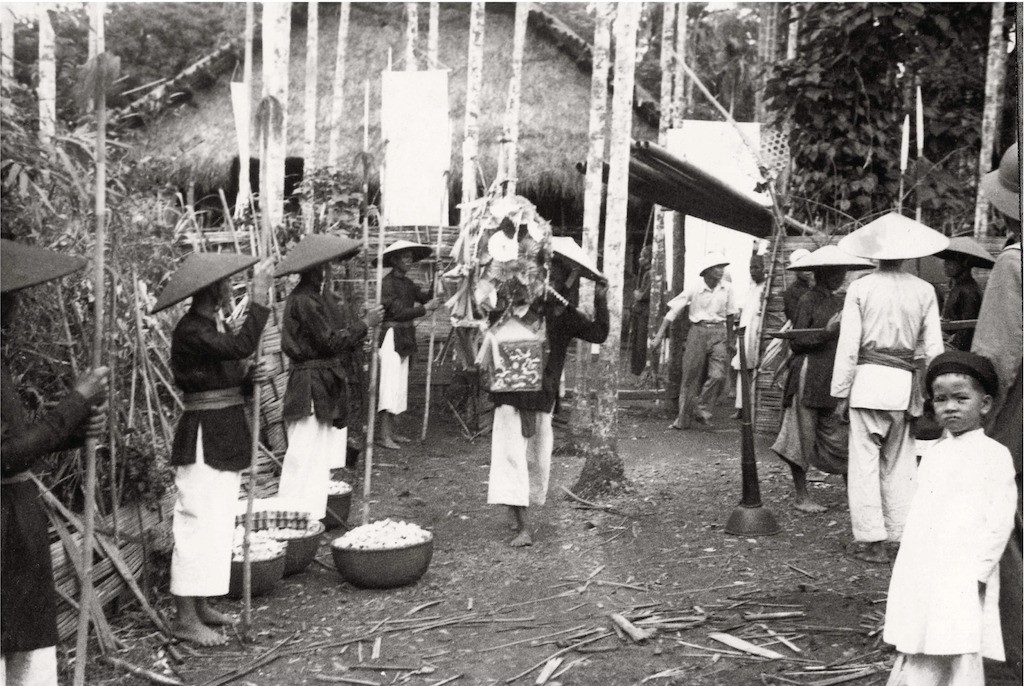 |
| Funeral of the Muong in Hoa Binh. Photo taken in 1937, anonymous. Photo: Zing News |
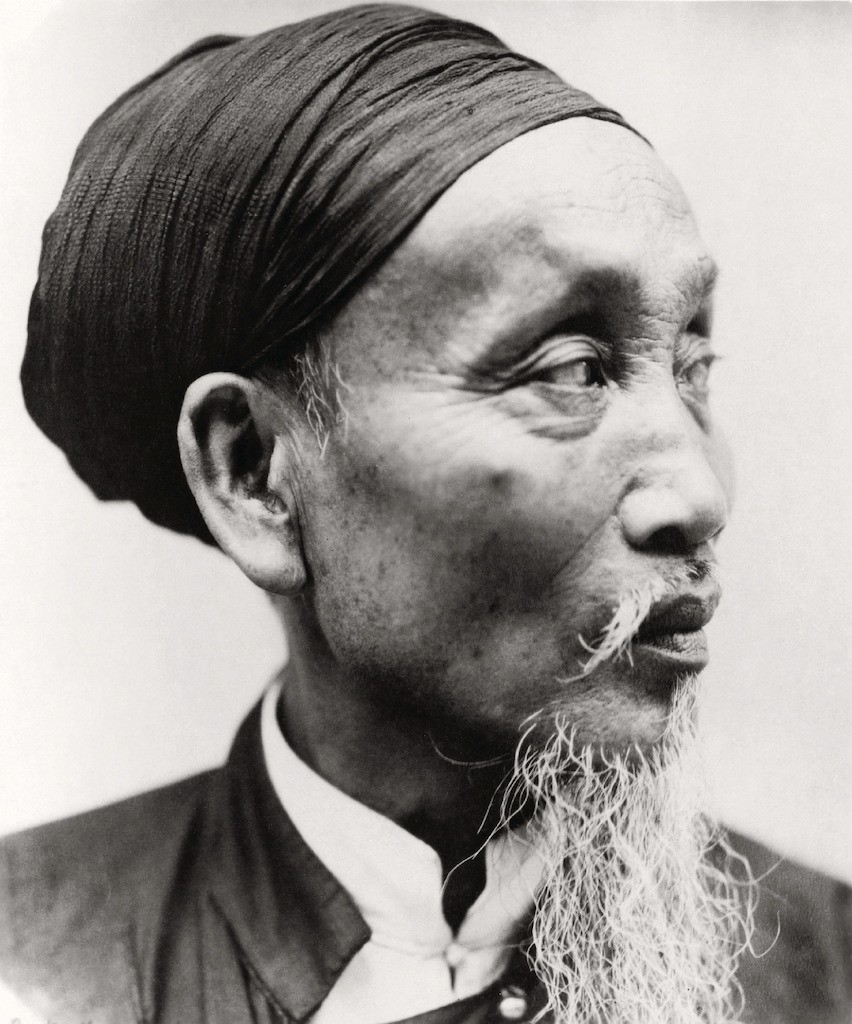 |
| A native of Northern Vietnam (unknown date, anonymous).Photo: Zing News |
 | Vietnamese Man's Quest to Photograph the Northern Lights Viet nature lover Nguyen Duy spends a lot of time discovering the magnificent beauties in Finland, the land he calls his second home, and one ... |
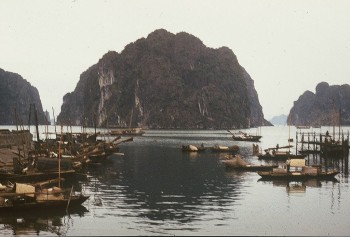 | Yesteryear in Ha Long Bay through a Foreign Lens On his trip to Ha Long Bay, German engineer Günter Mosler captured lasting images of the amazing scenery Vietnam has to offer and plenty of ... |
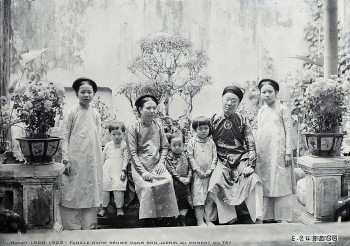 | Tet of Yesteryear: How Vietnam's Beloved Holiday was Celebrated a Century Ago A collection of rare photographs taken during Lunar New Year in Hanoi in the 1920s. |














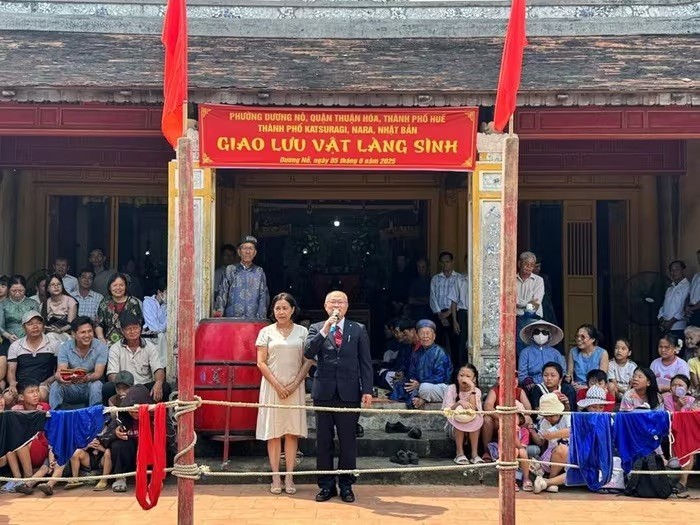 Viet's Home
Viet's Home
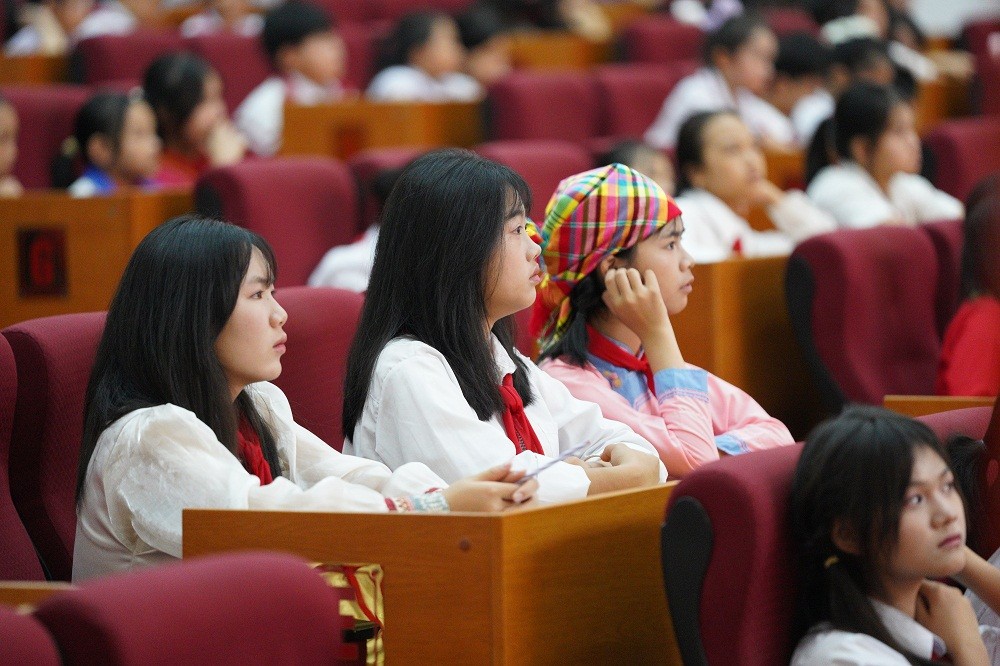 Viet's Home
Viet's Home
 Viet's Home
Viet's Home
 Viet's Home
Viet's Home
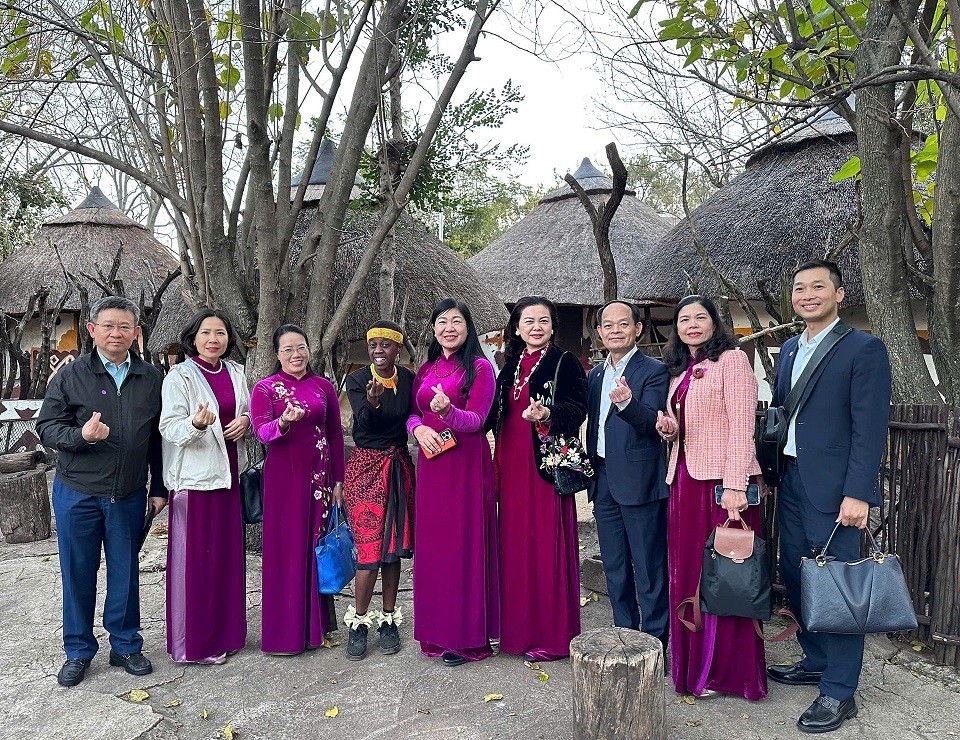 Viet's Home
Viet's Home
 Viet's Home
Viet's Home
 Focus
Focus
 Viet's Home
Viet's Home


